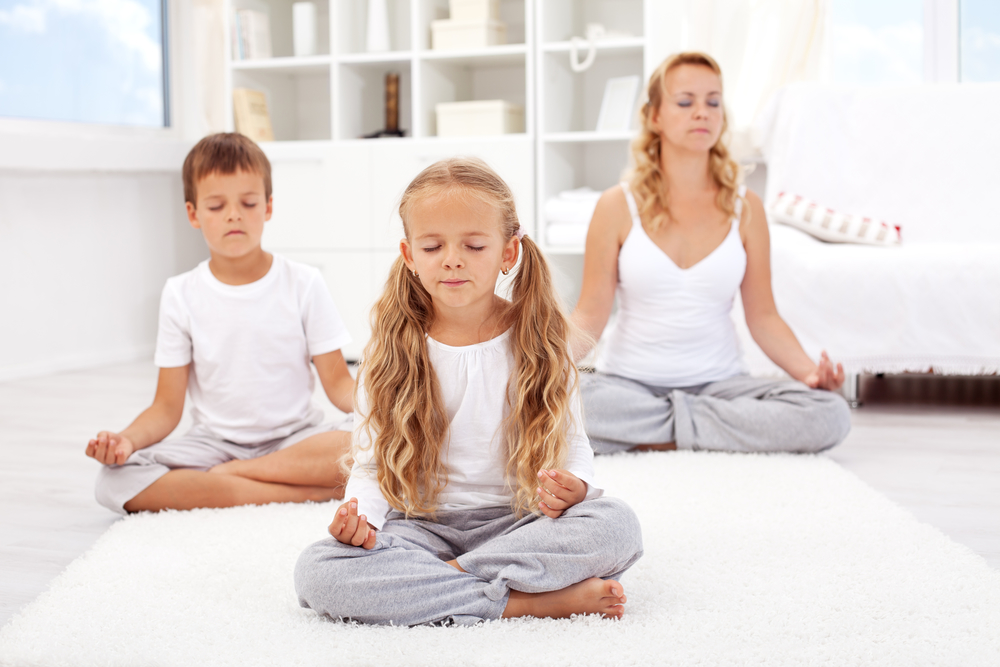Just like adults, Children can suffer from different stresses in their lives. Starting kinder, starting primary or high school, moving home, changes to family situations and more.
One way we can help children to cope with situations of stress, as well as calm their minds and bodies on a daily basis is through yoga and meditation.
Put simply, yoga is a practice of poses and control of the breath that helps to develop flexibility, strength, relaxation and calmness. It has been shown to help with physical and mental health.
Yoga is great for many reasons. Firstly, it’s exercise, it helps build healthy and strong bodies, it helps children learn to manage their emotions, it has been shown to help build confidence, concentration, coordination and can be a great way for children to self-regulate.
According to Jessica Mcilveen, Social Worker and founder of Kids Yoga Therapy, yoga is also a fabulous tool for children who have suffered some form of trauma.
“When a child has experienced trauma, either one-off or ongoing, they can be stuck in fight or flight, the fear response, that’s the sympathetic nervous system. When this is triggered consistently children can remain in this state and are triggered very easily. Their little smoke alarm response system in their brain is constantly on alert for threats in their environment,” says Jessica.
“So the relaxing response has no power. Yoga and meditation really does strengthen this. We do this with breathing exercises. The one and only aspect of our automatic nervous system that we have control over. That’s why it’s crucial.”
Jessica states we can bring yoga into the home on a daily basis with these 4 steps.
- Have your own mantra. Create a positive I AM statement with the child. So something that they can repeat in their mind throughout the session and throughout the day. Eg. I AM KIND TO MYSELF AND TO OTHERS.
- Do a short 5-minute yoga routine. If you’re not familiar with yoga you can look it up on the internet, or try one of Little Rockers Radios fun-key yoga classes. If it’s a bedtime routine, try and have the poses on the ground.
- At the end of the session do a connected calming activity, something where there’s a physical connection between you and the child. For example, the child has their head on your belly and the child is asked to focus on your stomach rising and falling with your breathe. Getting the child to concentrate on something other than the external environment.
- After this, you could do a short relaxation or meditation. This could look like a tense and release exercise, so you could get your child to lay on their back, name each body part, tense them then relax. It’s a great way to get the tension out of the body. Or pop a teddy or stone on their belly button, ask them to breathe and focus on the teddy/stone rising and falling. You can also try one a 5-minute Happy Smile Little Meditation.
This can be a 10-15 minute routine, and it’s a well-rounded sequence you can do with the kids on a daily basis.
Meditation, quite often performed after a yoga practice, teaches children to relax and gain some mental clarity themselves. Obviously, the child’s age has a lot to do with how well they pick up on this, however like many skills, the earlier you begin learning, the better.
Tips to be mindful together!
- Accept help – guided meditations are a great way to start at home. Try the Happy Smile Little Meditations (as mentioned above).
- Don’t have huge expectations that you will turn a tantrum throwing toddler (perfectly normal by the way) into a mini yogi with a calm mind overnight. Small steps each week is a great place to start.
- Remember simple mindfulness can be practiced anywhere and our children can teach us a lot. Stop to look at the flowers with them, stop to explore the ants, take interest in the piece of bark on the ground. Live in the moment with your children.
- Lead by example. Do the guided meditation with your children, if you feel yourself getting worked up let your children see you taking 10 deep breaths and so on. Children will learn so much more from what we do than what we say.
Namaste & good luck!
Written by Sarah Morrissey, founder Little Rockers Radio. Sarah is passionate about children’s physical and mental health.
You may also like to read:









